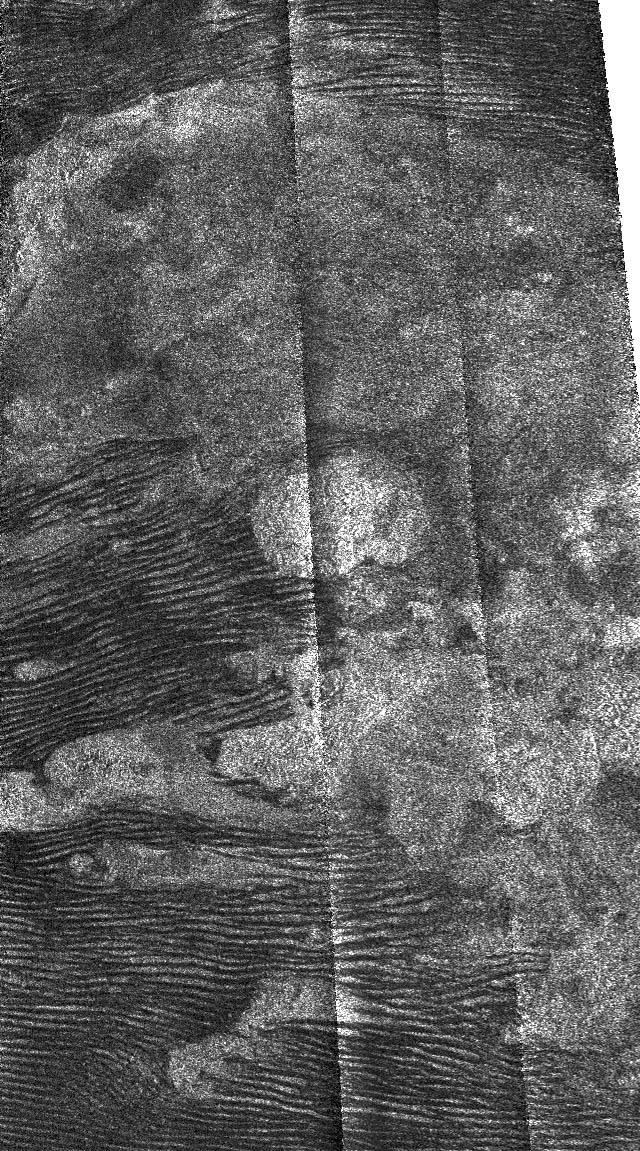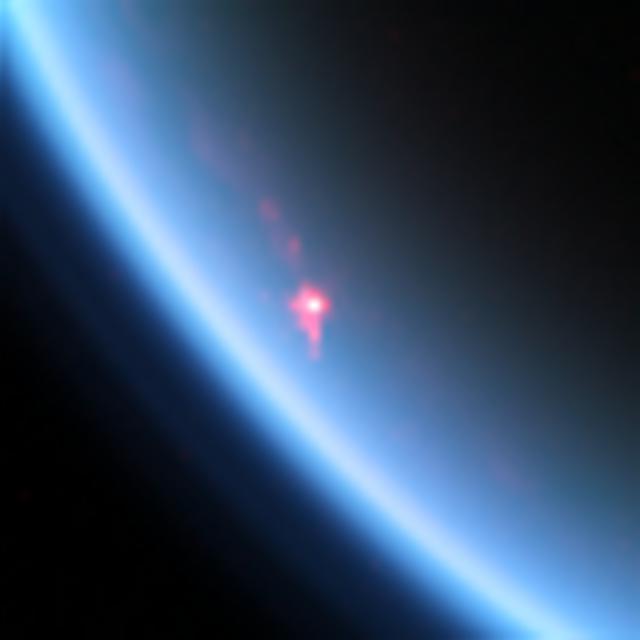The Frozen Chemistry of Titan
Unraveling the Secrets of Organic Ices in an Alien Sky
Introduction: An Atmospheric Ice Laboratory
Titan, Saturn's enigmatic moon, hosts a meteorological spectacle unmatched in the solar system. Its nitrogen-rich atmosphere, suffused with methane, undergoes photochemical reactions that generate complex organic molecules. As these compounds descend into the frigid stratosphere (60–300 km altitude), they freeze into exotic ice crystals, forming multilayered clouds far more diverse than any on Earth 2 .
Did You Know?
Titan's stratosphere is about 10 times colder than Earth's, with temperatures reaching as low as 70 K (-203°C).
Scientific Significance
These ices hold clues to prebiotic chemistry—processes that may mirror the early steps toward life's emergence 3 .
"Titan's stratosphere is nature's most sophisticated ice chemistry lab—where molecules that shaped our origins are frozen in time." — Dr. Carrie M. Anderson, NASA GSFC
Key Concepts: From Gas to Ice in a Hydrocarbon Sky
Photochemical Factories
Titan's upper atmosphere buzzes with energy. Solar UV radiation and cosmic rays shatter methane (CH₄) and nitrogen (N₂) molecules, triggering cascades of reactions that produce hydrocarbons (like acetylene C₂H₂ and ethane C₂H₆) and nitriles (like hydrogen cyanide HCN and cyanoacetylene HC₃N) 1 .
The Condensation Zone
As gases sink into the colder stratosphere (temperatures: 70–150 K), they reach their condensation points. Unlike Earth's water cycle, Titan's involves multiple compounds freezing at distinct altitudes, creating a "stacked" cloud structure:
| Compound | Formula | Condensation Altitude (km) | Significance |
|---|---|---|---|
| Hydrogen Cyanide | HCN | 80–100 | Prebiotic precursor; dominant in polar ices |
| Dicyanoacetylene | C₄N₂ | 85–90 | Unique polar "hood" cloud constituent |
| Cyanoacetylene | HC₃N | 70–90 | Co-condenses with HCN at poles |
| Ethane | C₂H₆ | ~60 | Forms tropospheric clouds and surface lakes |
Microphysics of Ice Formation
Nucleation begins on tholin haze particles—complex organic aerosols raining down from higher altitudes. These act as seeds for ice deposition. Once nucleated, ice particles grow through condensation and collide via coagulation, reaching sizes of 1–10 μm 1 . Crucially, Titan's extreme cold enables co-condensation, where multiple gases freeze simultaneously into mixed-ice particles—a process recently shown to explain spectral features unmatchable by pure ices 2 .
Deep Dive: The Cassini CIRS Experiment—Decoding the 221 cm⁻¹ Enigma
Methodology: Probing Titan's Winter Pole
In March 2005, Cassini's Composite Infrared Spectrometer (CIRS) targeted Titan's north polar stratosphere (85°N) during winter. Its mission: capture limb-viewing spectra—observations tangent to the moon's atmospheric layers—to isolate emissions from specific altitudes 5 .
Step-by-Step Procedure:
- Spectral Acquisition: CIRS recorded infrared spectra at 0.5 cm⁻¹ resolution
- Temperature Separation: Researchers isolated ice emissions
- Continuum Modeling: Baseline aerosol opacity profile established
- Feature Identification: Residual peaks compared to lab spectra 5

Results and Analysis
The key discovery was an enigmatic emission feature centered near 221 cm⁻¹. Neither pure HCN ice (peak: 172 cm⁻¹) nor pure C₄N₂ ice (478 cm⁻¹) matched it perfectly. However:
- A blend of HCN ice (70%) + C₄N₂ ice (30%) reproduced the feature's shape and position 5
- Radiative transfer modeling indicated ice particles with radii of 5–10 μm—far larger than expected—at ~90 km altitude
- The C₄N₂ vapor abundance was surprisingly low (<4×10⁻¹⁰), suggesting rapid "freeze-out" into particles 4 5
| Parameter | Value | Implication |
|---|---|---|
| Primary spectral feature | 221 cm⁻¹ emission band | Indicates mixed HCN and C₄N₂ ice |
| Particle size | 5–10 μm radius | Larger than models predicted |
| Cloud top altitude | ~90 km | Matches condensation height for C₄N₂ |
| C₄N₂ vapor abundance | <4×10⁻¹⁰ mole fraction | Implies efficient condensation nucleation |
Scientific Significance
The Co-Condensation Revolution
Early cloud models assumed pure ices. Cassini data forced a rethink:
- Spectral Misfits: Pure HCN ice absorbs at 172 cm⁻¹, not 221 cm⁻¹. Pure C₄N₂ absorbs higher (478 cm⁻¹)
- Laboratory Validation: Experiments with co-condensed HCN–HC₃N–C₄N₂ ices replicated the broad 221 cm⁻¹ feature 2
- Microphysical Implications: Mixed ices form at lower supersaturations than pure ices, grow faster, and can reach larger sizes 3
Seasonal Dynamics: The Polar Ice Factory
Titan's seasons (each ~7.5 Earth years) drive ice cloud formation:
- Winter Subsidence: As a pole enters winter, Hadley cell circulation transports gases from the summer hemisphere
- Cold Trapping: Enriched organic vapors condense efficiently
- Spring Thaw: As sunlight returns, ices sublimate but leave lingering effects 4 5

Seasonal Timescale
Titan's year is about 29.5 Earth years, making each season approximately 7.5 Earth years long. This extended seasonal cycle creates persistent atmospheric patterns that last for years.
The Scientist's Toolkit: Probing Titan's Ices
Laboratory cryostat
Simulates Titan conditions (70–150 K) for measuring co-condensed ice spectra 3
CARMA model
Aerosol microphysics simulation for predicting ice particle growth/coagulation 1
Tholin analogs
Organic haze simulants for ice nucleation efficiency studies 3
Vapor pressure database
Thermodynamic properties archive for predicting condensation altitudes 3
Future Frontiers: From Ice to Life?
Titan's organic ices eventually descend to the surface, potentially delivering prebiotic material to its methane lakes and water-ice bedrock. Key unanswered questions:
- Do more complex organics like amino acids form in mixed ices?
- How do ice structures (amorphous vs. crystalline) affect reactivity?
- Will NASA's Dragonfly mission (arriving 2034) detect surface ices from past stratospheric precipitation? 2

Dragonfly Mission
NASA's upcoming Dragonfly rotorcraft will explore Titan's surface, potentially analyzing stratospheric ice deposits when it arrives in 2034.
Image: NASA/Johns Hopkins APL